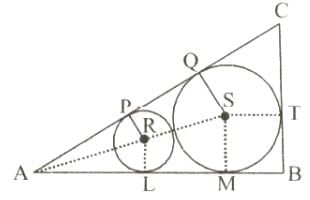SRMJEE Mock Test - 10 (Medical) - JEE MCQ
30 Questions MCQ Test - SRMJEE Mock Test - 10 (Medical)
Which one of the following represents the correct dimensions of the coefficient of viscosity?
Two water droplets coalesce to form a large drop. In this process,
Two vessels A and B of different shapes have the same base area and are filled with water up to the same height H (see figure). The force exerted by water on the base is FA for vessel A and FB for vessel B. The respective weights of the water filled in the vessels are WA and WB. Then:
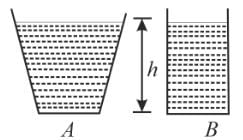

A long-playing record revolves at a speed of  and has a radius of 15 cm. Two coins are placed at distances of 4 cm and 14 cm from the center of the record. If the coefficient of friction between the coin and the record is 0.15, choose the correct option:
and has a radius of 15 cm. Two coins are placed at distances of 4 cm and 14 cm from the center of the record. If the coefficient of friction between the coin and the record is 0.15, choose the correct option:
In an experiment to measure the internal resistance of a cell by potentiometer, it is found that the balance point is at a length of 2 m when the cell is shunted by a 4 Ω resistance, and at 3 m when the cell is shunted by an 8 Ω resistance. The internal resistance of the cell is:
An aqueous solution of an ionic salt having molality equal to 0.1892 freezes at - 0.704°C. What is the van't Hoff factor of the salt? (Given Kf for water = 1.86 K/m)
Directions: In the following question, two statements are given. One is assertion and the other is reason. Examine the statements carefully and mark the correct answer accordingly.
Assertion: If β4 for [Cu(NH3)4]2+ is 2.1 x 1013, its instability constant is 4.76 x 10–14.
Reason: Overall dissociation equilibrium constant varies inversely with formation constant.
Which of the following gas is obtained when ammonium dichromate is heated?
Consider the reaction: 2A + B → products
When the concentration of B alone was doubled, the half-life did not change.
When the concentration of A alone was doubled, the rate increased by two times.
The unit of the rate constant for this reaction is:
Consider the hypothetical reaction given below
A + 2B → C
The rate equation for the reaction is given as: Rate = k[A][B]
What will be the rate of reaction if the concentration of A is kept the same but that of B is doubled ?
A solution of 2.0 g of sulphur in 100 g of CS2 has a vapour pressure of 844.9 torr. At 48oC, the vapour pressure of pure CS2 is 850 torr. Calculate the atomicity of sulphur molecule.
Which of the following has the highest coagulating power for As₂S₃ sol?
How many eggs will be formed from 100 primary oocytes
If the vas deferens of a man is surgically blocked,
Study the following statements and select the incorrect ones.
(i) Pyramids of energy and yearly biomass production can never be inverted, since this would violate the laws of thermodynamics.
(ii) Pyramids of standing crop and numbers can be inverted, since the number of organisms at a time does not indicate the amount of energy flowing through the system.
(iii) There are certain limitations of ecological pyramids such as they do not take into account the same species belonging to two or more trophic levels.
(iv) Saprophytes are not given any place in ecological pyramids even though they play a vital role in the ecosystem.
Which of the following statement is correct for the given diagram?
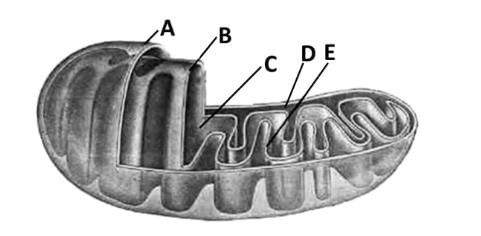
Which of the following genes were introduced in cotton to protect it from cotton bollworms?
Enzymes are commonly proteinaceous substances that are synthesised by living cells. Which of the following groups of enzymes catalyse bonding of two chemicals with the help of energy obtained from ATP resulting in formation of bonds like C-O, C-S, C-N and P-O?
The cytoplasmic connections from cell to cell are known as
Which of the statements given above is/are correct?
i. Polysaccharides are composed of long chains of monosaccharides and can be classified as homopolymers or heteropolymers.
ii. Cellulose is a homopolymer made only of glucose and forms complex helical structures.
iii. Starch serves as an energy reserve in plants and can form helical structures that bind iodine, producing a blue color.
iv. Glycogen, found in animals, is a linear polysaccharide that does not have branches.
The transverse section of a plant part showed polyarch, radial and exarch xylem, with endodermis and pericycle. The plant part is identified as :
Rate of breathing is controlled mainly by ________________.
The sum of three consecutive odd numbers is 1383. What is the largest number?
Two circles inscribed in a right angled triangle have radii 12 cm and 3 cm. Find length of AP?
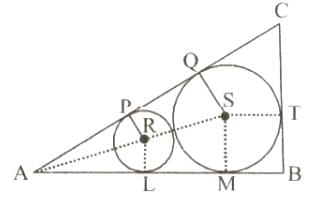
What is the author's opinion about the competition for customers among micro-financiers?
Choose the option which is most similar in meaning to the word printed in underline as used in the passage.
Verge


 = [ML-1T-1]
= [ML-1T-1]
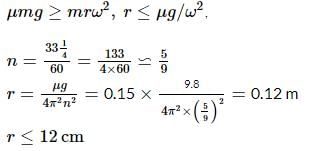
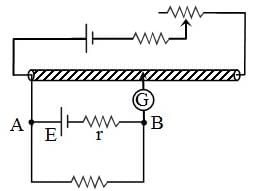
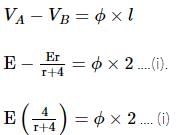


 =
=  = 2
= 2 = 2.1 x 1013
= 2.1 x 1013 




